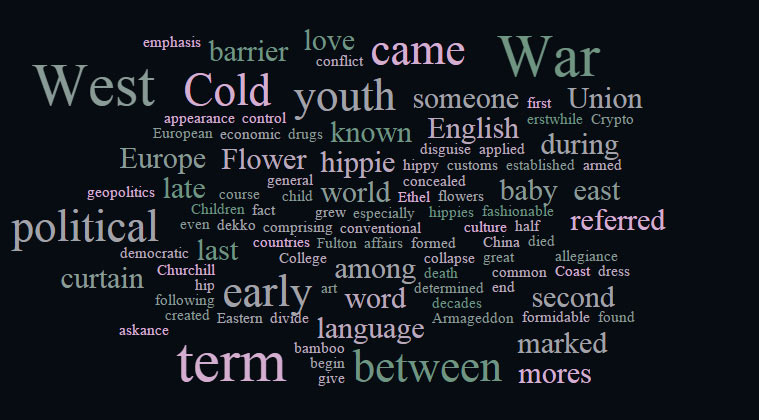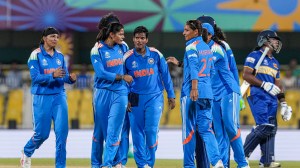When the iron curtain lifted to reveal the power of the flower children
The war of apocalyptic proportions left in its wake ties and trends which determined much of the geopolitics in the second half of the last century.
 The hypothetical barrier between the East and the West during the Cold War itself came to be known as iron curtain.
The hypothetical barrier between the East and the West during the Cold War itself came to be known as iron curtain.
As the last month marked the 70th year of the end of the second Armageddon in Europe, we saw some of the lexical takeaways for the English language. The war of apocalyptic proportions left in its wake ties and trends which determined much of the geopolitics in the second half of the last century. It also brought about an upheaval in social mores of the young. Let’s have a dekko.
[related-post]
The Cold War, the most formidable of its political legacies, created that great West-East divide. It referred to hostilities short of an armed conflict comprising threats, violent propaganda and subversive political activities. A general term to begin with, it was subsequently applied to the state of affairs between the erstwhile USSR and the West. It remained relevant till the collapse of the communist regimes of east Europe in the late 1980s.
The hypothetical barrier between the East and the West during the Cold War itself came to be known as iron curtain. Though it was Winston Churchill who during his speech on March 5, 1946 at Westminster College, Fulton, Missouri, established the term in the English language, its first use has been traced to Ethel Snowden in the book ‘Through Bolshevik Russia’. The term later found a resonance in bamboo curtain, a political and economic barrier between territories under the control of the communist China and non-communist countries.
Crypto communist was a common right wing scare word of the early years of the Cold War and referred to someone who concealed his communist allegiance, typically beneath a disguise of democratic socialism. In course of time it too died a natural death.
Benelux, the customs union of Belgium, the Netherlands and Luxembourg formed in 1947 in fact proved to be the child which grew up as the European Union.
What came to be known as baby boom in early 40s, a temporary marked increase in birth rate, would give rise to baby boomers in the following two decades. They will then script whole new societal norms, music and art preferences and sartorial novelty. They were precursors of that section of the youth who came to be called hippie or hippy, originally, a low-profile synonym of hipster, someone who was in touch with the fashionable tastes or just hip.
Beginning on the West Coast of the US, the hippie culture spread to the West among youth and even to the Eastern world. It was characterised by an emphasis on non-violence, universal love and rejection of the mores of conventional society, especially in terms of dress, personal appearance and way of life. In the post-hippie world, the word stands for a patronising term for casualness, or unconventionality among youth.
Flower people or Flower Children were members of a sub-group of hippies in the late 60s and the early 70s who wore or carried flowers as symbols of peace and love. Widely ridiculed for their unworldly ways, they were looked askance for their reputation for taking drugs and sexual promiscuity.



- 01
- 02
- 03
- 04
- 05




























